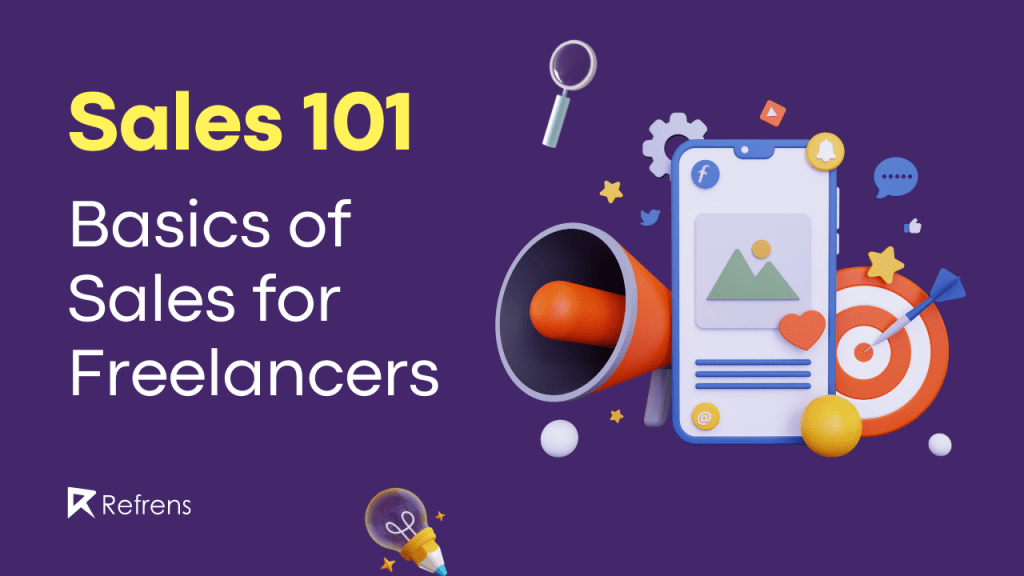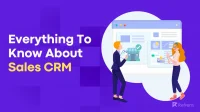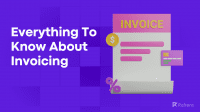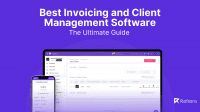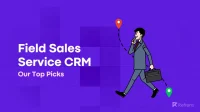When you work as a freelancer, you’re practically a one-man show, and you’re in charge of all of the strategic roles that go under the operations umbrella that keeps the show running. From funding to marketing to customer support, a successful freelancer handles it all.
Amidst all this, being able to sell your services, and achieving your full potential is the only way to grow your business.
Furthermore, while your work may speak for itself, it is up to you to get it in front of your clients and market its worth.
In a freelancing business, along with the quality of service provided, the clients want to know about what it’s like working with you. Once you know the sales strategies, going through the B2B sales process is not as scary as it sounds.
Additionally, Sales is a tested technique for expanding any company. It has a proven track record. A tried and tested method for increasing revenue when followed correctly.
Sales 101: Freelance Basics
Freelance Basics 1: Selecting A Niche
As a freelancer, it is important to find the right clientele through your marketing plan. Before you start selling anything, make sure you select the right niche. Select a narrow and specific market. A market that has money, so that the niche can afford your services.
Moreover, Selecting the right niche and the right market would help you double your income.
Additionally, find a market for them, whether online or offline, perhaps where people are currently employed. Offer them a freebie in exchange for your services, such as directing them to your website and offering a one-day free trial of your company in exchange for their phone number.
As a result, you now have their contact information and can call them. Over and above, pursue direct clients and diversify your money streams.
Freelance Basics 2: Leveraging Your Networks
There are numerous advantages to having a strong network, ranging from the development of new contacts to the formation of long-term collaborations.
However, networking might be intimidating, especially if you have a quiet personality and/or have just started your freelancing career.
An effective way to get better-paying freelancing leads is by leveraging your existing networks. From your relatives, and friends to your former coworkers, using their connections start introducing yourself to the companies to seek to work with.
Freelance Basics 3: Preparing A Perfect Pitch
Once you have found the client details, prepare, and send them a perfect proposal. It’s crucial to write the perfect pitch if you want to gain clients and expand your freelance business.
Know your customers and their company, focus on how your services and skills will solve their problems or aid their goals, demonstrate that you care for their success, and how your strategies will help them get their money’s worth. Keep it short and to the point, and be specific on your offerings and timeframe.
The cold pitch and the warm pitch are the two primary sorts of freelance pitches:
- Cold Pitch – When you make a cold pitch to a client with whom you have no prior relationship, you are attempting to persuade them to collaborate with you. Essentially, you’re approaching strangers and enticing them to work with your company. This method is suggested for freelancers who would like to play the numbers game and reach out to hundreds of potential leads quickly.
- Warm Pitch – Warm pitching entails getting a potential lead “warmed up” before throwing them a pitch. Interacting with potential clients on LinkedIn and Twitter, for example, can help you get on their radar and get on their notifications. This strategy works well for interacting with “dream clients” on your bucket lists, such as high-profile businesses or Fortune 500 companies.
Both strategies are valid ways to interact with potential clients, but the primary difference is in the amount of time and effort required.
Freelance Basics 4: Building A Connection
Build a connection with your clients after pitching them, perhaps by publishing experiences on your website, or posting videos or comments from prior customers, so that they can understand the worth of what they will achieve.
Moreover, the working relationship between you and your clients on a day-to-day basis is arguably more crucial than any other factor. As a result, ensuring the success of your client correspondence should be a top priority.
The three essentials for a successful client-freelancer relationship are:
- Both of you have access to clear communication lines.
- Quality resources, not for your benefit, but for the benefit of the client.
- Instead of providing one-way feedback, this is a means to look at and examine the project as a whole.
Furthermore, for freelancers to establish good business relationships and ensure project quality meets expectations, effective client communication is critical.
Additionally, it’s important to not only communicate properly but, ask them the correct questions so you can get a sense of their requirements and desires.
Freelance Basics 5: Fixing A Price
Everyone understands that time equals money. But, how valuable is your time?
What influences the amount of money you can charge based on your experience, talents, location, value, industry, and so on? In truth, there is no such thing as the ideal freelancer price formula. You’ll need to choose a rate, and then you’ll be able to watch how potential clients react to it and adjust it to meet your needs.
Take a look at the two most prevalent price models: hourly and project-based (fixed).
- Pricing is determined by the hour
Because the idea is so easy, hourly pricing is the most typical way new freelancers determine their rates. This approach requires you to calculate an hourly rate for your labor and multiply it by the number of hours you spent doing it.
Customer service and technical support are two examples of projects that perform well on an hourly basis.
- Fixed price based on projects
The freelancer charges a flat rate for the entire project in this arrangement. Rather than being paid based on the number of hours you labor, you are paid based on the outcome you produce. This is the best option for projects with well-defined deliverables.
Web design and mobile app development are two examples of projects that are well-suited for fixed-price contracts.
As a result, consider the following before beginning your pricing strategy :
- Ask yourself questions like, “How much money would I want to achieve as a goal?” and “What are the high-paying freelance skills?”
- Set a salary target for the year.
- Think about how many billable hours you’ll need to work.
- Including the cost of freelancing expenses in your price
- Know the prevailing fee for your services in the market.
- Recognize your worth; that is your brand value
The most crucial thing to keep in mind is that your rate will change over time. Choose a freelance rate that you’re comfortable with and give it a shot. If your price plan fits the worth of your service, the market and potential clients will tell you. As you gain expertise, enhance the value of your services, and your revenue goals alter, you can adjust your fee.
As a result, you’ll be able to attract a high-paying clientele.
Freelance Basics 6: Training To Always Say A YES
It all comes down to the entire process of getting a ‘yes’ from the customer. During the whole cycle, keep providing opportunities for your client to agree with you throughout the sales pitching on small details, to help you train them to say yes. Through this, when the time comes to say yes to signing a contract with you, they won’t take much time to think, it will come naturally and easily to them.
For example, ask short questions to get their opinion, like, Do you agree? Is this how it should be? Are we on the same page?
Freelance Basics 7: Converting Prospects Into Clients
Not all of your prospects will go through your automated killing sales funnel and convert into customers the way you want them to. To get them to bite, you may need a little help from other sources.
Here are eight sales closing tactics to help you complete more deals.
- Make a deadline for yourself- For example “We haven’t heard from you in 30 days,”. Will this is our final correspondence, please do not hesitate to contact us if you are in a position to move further.”
- Ask Questions – “It’s been almost a week since we’ve heard from you,” you might say. Have you had the opportunity to review the documents and make a decision?” This is an excellent approach to putting pressure on someone while also allowing them to ask inquiries.
- Create a FAQ section for your website – Answer any queries that prospects may have, and make it easy to find on your website.
- Incorporate some icebreakers into your email marketing strategy– Include some amusing facts about your organization or the surrounding neighborhood. This might definitely grab your prospects’ attention and make them forget about the other possibilities.
- Provide incentives –Who doesn’t enjoy getting something for anything? Offering a free gift or a discount is frequently a good method to convert sales.
- Reminder about the return on investment – Make sure to remind your prospect that your product or service has the ability to boost their ROI.
- A simple follow-up email or phone call asking if your prospects have any additional questions will often re-engage them in the purchasing process. This is an excellent technique to convert them into a customer before they waste too much time.
- Inquire about the sale – Examine how many of your prospects reply “yes” when you ask whether they are ready to get started. Because they were interested in what was being presented, they became a prospect. Your rival will ask for the sale if you don’t.
As a result, incorporating these strategies will undoubtedly convert your prospects into customers.
Freelance Basics 8: Measuring Your Results
It is critical to effectively measure sales success in order to promote growth.
As a freelancer, your issue is unlikely to be a lack of data. It’s an excessive amount of information.
After all, we can measure everything with the most up-to-date technologies. There’s a seemingly limitless variety of KPIs, reports, and data points, ranging from the proportion of reps utilizing your CRM and cohort retention rate to the estimated duration to hire and sales velocity.
Instead of keeping track of everything, keep track of the most significant things. You’ll be able to understand the trends and their relevance more easily, and you’ll be able to complete your research more quickly.
Performance metrics are used by businesses to see if their results are in line with their objectives. When a performance metric falls outside of the set range, it shows underperformance. And if an outcome falls within or above the range, the company is on track to accomplish or surpass its objectives.
For measuring there are a number of CRM software available that you can use like Salesmate, keep, Really simple system, Zoho CRM, NetHunt CRM, and many more.
Moreover, you can start by making a basic excel spreadsheet, making sure it is up-to-date and accurate to understand and measure success. Knowing the conversion rate helps you measure the success rate and tell you the scope of improvement for next time.
Customers are your most valuable assets as a freelancer, so understanding and working on conversion rate optimization is critical. To increase sales, you must be honest and communicative.
Take care of your current customers so that you can keep them in the long run while also attracting new ones. It’s all about bridging the gap and fostering mutual respect.
Recognize that by selling, you are not taking; instead, you are offering them what they are not capable of. Know what you’re worth. It’s all about balancing two energies to solve problems in sales.
Once you crack good results, chasing payment is going to become another nightmare. There would be freelancing clients from all over the country and the world. As a result, you’ll need to use an international payment gateway.
Using a payment gateway like Refrens will reduce the amount of time you spend following down late payments and eliminate the possibility of fraud.
Conclusion On Freelance Basics
Anyone may learn, use, and gain from sales as a valued talent. As a freelancer, it’s only one of the resources available to you. I strongly advise you to try sales if you’re seeking a long-term approach to expanding your freelance business outside of your existing network.
As a result, incorporating the aforementioned elements into your sales strategies will undoubtedly assist you in being a successful freelancer.
